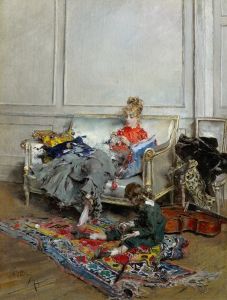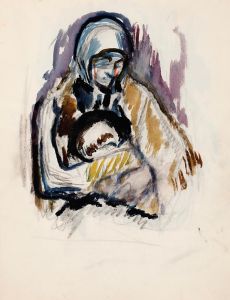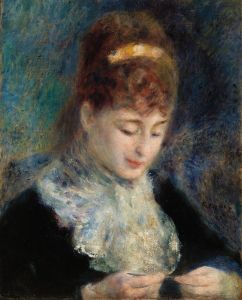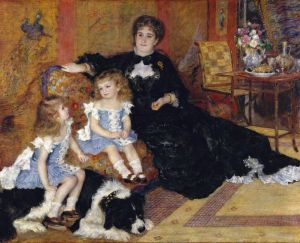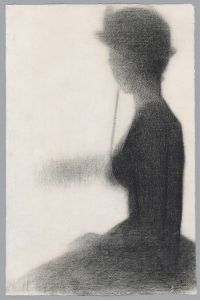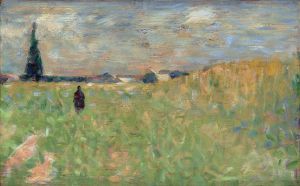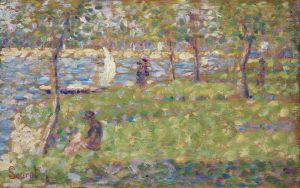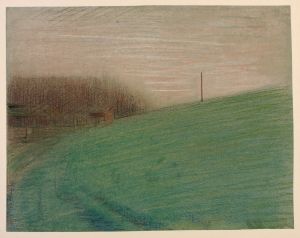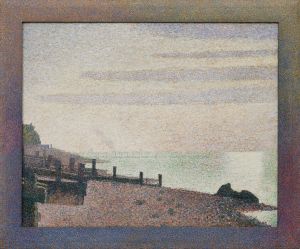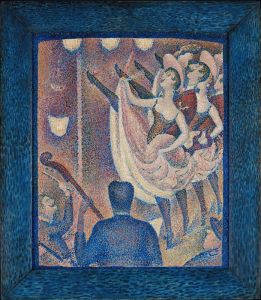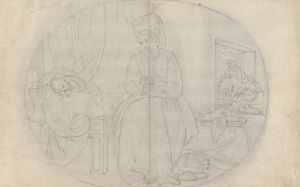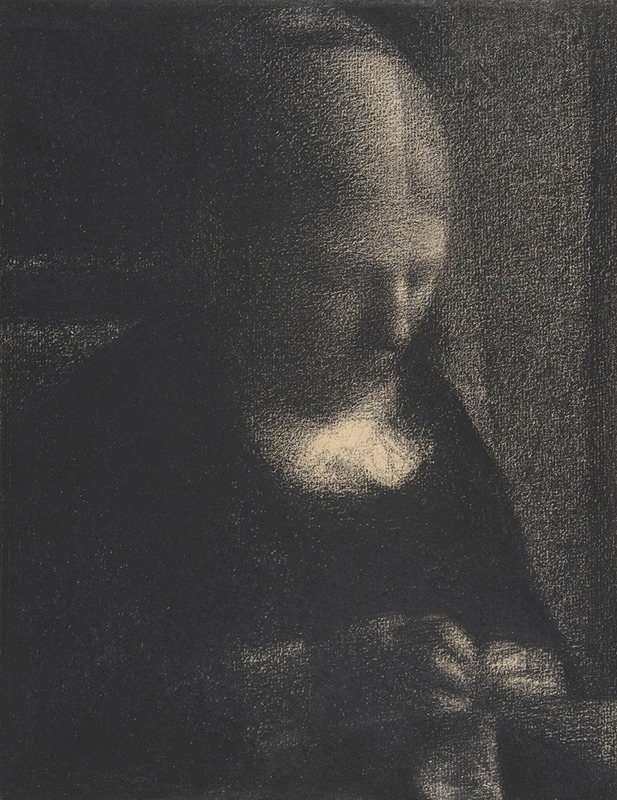
Embroidery; The Artist’s Mother
A hand-painted replica of Georges Seurat’s masterpiece Embroidery; The Artist’s Mother, meticulously crafted by professional artists to capture the true essence of the original. Each piece is created with museum-quality canvas and rare mineral pigments, carefully painted by experienced artists with delicate brushstrokes and rich, layered colors to perfectly recreate the texture of the original artwork. Unlike machine-printed reproductions, this hand-painted version brings the painting to life, infused with the artist’s emotions and skill in every stroke. Whether for personal collection or home decoration, it instantly elevates the artistic atmosphere of any space.
Georges Seurat, a French post-impressionist painter, is renowned for his innovative use of color and technique, particularly his development of pointillism. One of his lesser-known works is "Embroidery; The Artist’s Mother," which provides insight into his artistic process and personal life.
"Embroidery; The Artist’s Mother" is a drawing that showcases Seurat's mother engaged in the act of embroidery. This piece is part of a series of drawings that Seurat created, which are characterized by their use of conté crayon on paper. This medium allowed Seurat to explore the effects of light and shadow with subtle gradations of tone, a technique that would later influence his larger works in painting.
The drawing is notable for its simplicity and intimacy. It captures a quiet, domestic scene, focusing on the artist's mother absorbed in her needlework. The use of conté crayon gives the piece a soft, textured quality, emphasizing the gentle play of light across the subject and her surroundings. Seurat's mastery of this medium is evident in the way he renders the delicate details of the embroidery and the fabric, as well as the serene expression on his mother's face.
Seurat's choice to depict his mother in this manner reflects a personal connection and a sense of respect and admiration. It is a departure from his more famous works, such as "A Sunday Afternoon on the Island of La Grande Jatte," which are grand in scale and complex in composition. Instead, "Embroidery; The Artist’s Mother" is intimate and focused, offering a glimpse into the artist's private world.
The drawing also exemplifies Seurat's interest in capturing everyday life and the people close to him. It aligns with the broader trends in 19th-century art, where artists began to focus more on personal and domestic subjects, moving away from the grand historical and mythological themes that dominated earlier periods.
While "Embroidery; The Artist’s Mother" may not be as widely recognized as Seurat's paintings, it is an important part of his body of work. It demonstrates his versatility as an artist and his ability to convey emotion and atmosphere through minimal means. The drawing is a testament to Seurat's skill in capturing the essence of his subjects with precision and sensitivity.
Today, Seurat's drawings, including "Embroidery; The Artist’s Mother," are appreciated for their technical brilliance and their contribution to the development of modern art. They offer valuable insights into his artistic journey and the evolution of his style. Seurat's work continues to be studied and admired for its innovative approach and its impact on the trajectory of art history.





